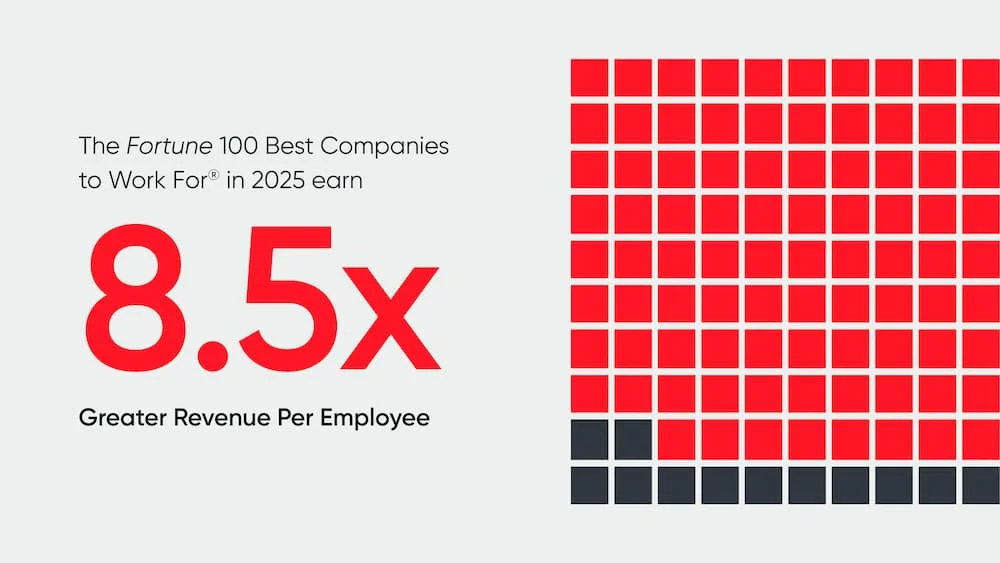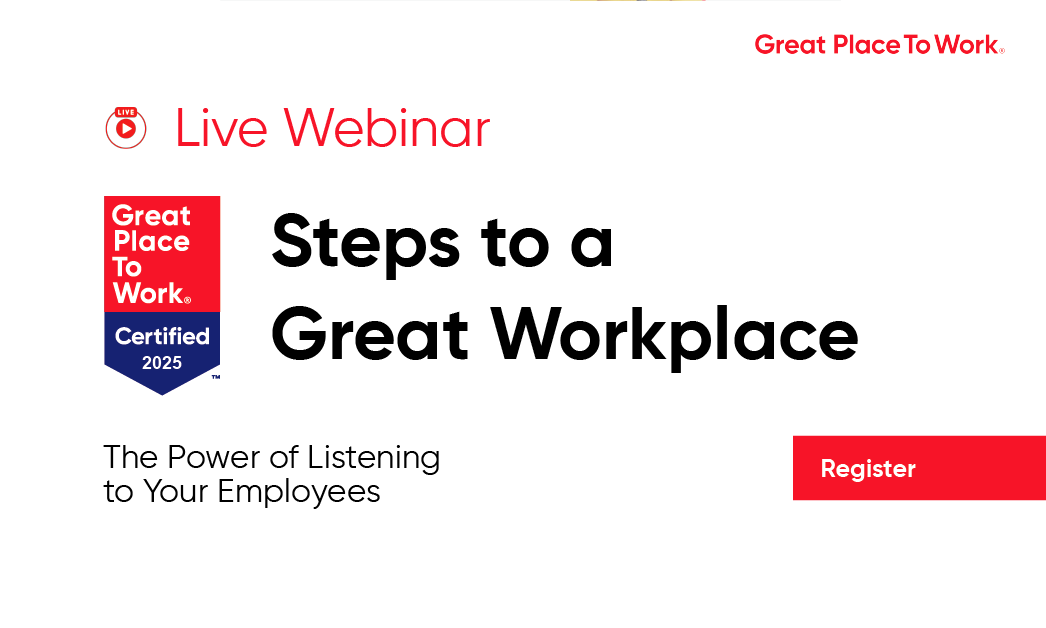In recent times, positive organizational culture has become the standard, as organizations now grasp the notion that their most valuable asset is their workforce. A Thriving workforce equals better input and better input equals amplified output. A Win for each party! There are several strategies and tools that could be used to achieve an exceptional workplace culture which ranges from leadership and management practices that are essential for organizational success by equipping leaders with providing valuable insights into leadership styles, communication, and decision-making processes to understanding and enhancing employee experience by getting feedback and insights into the holistic experience of their workforce. As Employers are increasingly understanding the significance of employee satisfaction and engagement as integral components of their success, they also understand the importance of harnessing the potential of employee engagement surveys to not only gauge employee sentiment but also to invigorate and align strategic initiatives within a company.
The Value of Employee Engagement Surveys
According to Gallup, Companies with engaged employees outperform those without by 202%. Also, engaged employees are 87% less likely to leave their companies than disengaged counterparts.
The Trust Index Survey at Great Place to Work is central to our mission, encapsulating the essence of our efforts in creating exceptional workplace environments as it’s a specialized tool designed to assess employee’s perceptions of their workplace culture, the level of trust they have in their organization, and their overall experience as employees. The 60-statement survey is structured to assess companies across five dimensions with Trust as its bedrock. These include evaluating employees' perception of their management’s credibility and business know-how; understanding employees’ perspectives around they potential for personal growth, gauging their alignment with company values, appraising their capacity to share ideas, and measuring their perception of leadership effectiveness within the organization.
In 2020, the Great Place To Work 100 Best Companies outperformed the market by 16.5%. Also, when a 24-year analysis was done (1998 – 2022), these great workplaces established a 3.36 Cumulative return above their peers.

When quantifiable information is extracted as data from the surveys, it can guide informed decisions. It drives employee engagement, identifies opportunities for growth, and sets benchmarks to track improvements and to compare against industry standards or best practices. Employee experience surveys aim to capture employees' perceptions, opinions, and suggestions related to their roles, work conditions, company culture, leadership effectiveness, career development opportunities, and more. Generally, they are used as tools to keep both employers and employees aligned as they seek to gather insights directly from employees to better understand their perceptions, needs, and sentiments. It emphasizes the importance of trust and workplace culture in creating a positive employee experience, which ultimately contributes to employee satisfaction, engagement, and organizational success. Employee surveys should be conducted with care to avoid fostering employee mistrust. It is essential to provide some form of outcomes or at least acknowledgment for the responses provided in the survey.
The inherent impact of gathering surveys to take a deep dive into employee experience gives a direct result that— increases innovation, ensures a stronger culture, enhances leadership, and customer satisfaction, enhances production, and survey feedback ensures that strategic initiatives are aligned with employee needs, increasing the chances of successful implementation. For every 1% increase in employee engagement, there is an associated 0.25% increase in customer satisfaction.
Aligning Company Initiatives & Goals with Employee Sentiment and Experience
Employee engagement surveys hold significant importance as they enable leaders to gain insights into areas where their teams face challenges, express dissatisfaction, or need additional support. Moreover, these surveys serve to invigorate strategic initiatives by furnishing valuable perspectives that shape their creation and execution. Strategic initiatives encompass precisely planned and deliberate measures adopted by an organization to attain distinct goals and objectives. These initiatives are usually scheduled across a defined timeframe and are crafted to propel progress, foster innovation, and secure a competitive edge. Organizations with a strong connection between employee experience and business strategy are more likely to outperform industry peers.
Utilizing employee engagement surveys to infuse vitality into strategic initiatives necessitates a systematic and deliberate approach that seamlessly integrates survey insights across the planning, execution, and evaluation phases of these initiatives. Here's a step-by-step guide on how organizations can accomplish this:
Align Surveys with Strategic Objectives:
Ensure that the questions in employee experience surveys directly correspond to the organization's strategic goals and initiatives. This alignment facilitates targeted feedback that can be directly employed to enhance the initiatives at hand. The Great Place To Work Trust Index Employee Engaementsurvey as defined provides great levels of organizational alignment with strategy. Further it provides companies with the opportunity to have additional customized statements that can be unique and reflective of their own organizational strategy.
Gather Comprehensive Data:
Ensure surveys encompass a wide spectrum of subjects, including leadership, communication, work environment, and growth opportunities. This holistic dataset provides a panoramic understanding of employee sentiments, enabling a well-rounded strategy for revitalizing initiatives.
Analyze Survey Outcomes:
Scrutinize survey responses meticulously to identify recurring patterns, pain points, and areas of contentment. Prioritize elements that align with the strategic initiatives you aim to invigorate.
Pinpoint Areas for Enhancement:
Identify specific domains that warrant improvement. Detect trends that signal challenges or gaps that could impede the accomplishments of strategic initiatives. Be transparent with employees about which challenges you can immediately take on, which ones you will take on later, and those you cannot take on in the foreseeable future.
Engage Employees in Problem Solving:
Foster employee engagement by involving them in collaborative problem-solving sessions or focus groups dedicated to devising solutions for identified areas in need of enhancement. This participatory approach cultivates a sense of ownership and augments the likelihood of successful implementation.
Customize Initiatives Using Feedback:
Tailor the strategic initiatives based on the feedback garnered from the surveys. Address concerns, amplify positive elements, and seamlessly integrate employee suggestions to ensure that the initiatives deeply resonate with the workforce.
Transparently Share Survey Findings:
Openly communicate the survey findings to employees. Spotlight the areas where their feedback has prompted improvements and changes, underscoring the value placed on their opinions.
Construct Actionable Roadmaps:
Develop detailed action plans that outline the precise steps to be taken in addressing each identified area for enhancement. Allocate responsibilities and establish timelines for implementation.
Provide Consistent Progress Updates:
Keep employees informed about the strides made in the initiatives influenced by their feedback. Regular updates foster a sense of participation and commitment to the ongoing transformations.
Continuously Gauge Impact:
Continually assess and measure the effects of the initiatives on employee experience and engagement. Employ follow-up (pulse) surveys to gauge the efficacy of the changes made.
Celebrate Achievements:
Recognize and celebrate the positive outcomes stemming from the initiatives. This acknowledgment reinforces the link between survey feedback, action, and constructive change.
Embrace Evolution and Enhancement:
Acknowledge that employee experience is an evolving journey. Utilize feedback from subsequent surveys to fine-tune initiatives and drive an ongoing cycle of improvement.
By seamlessly infusing employee engagement survey insights throughout the entire lifecycle of strategic initiatives, organizations can cultivate a potent synergy between employee feedback and the pursuit of positive transformation. This not only augments the accomplishments of initiatives but also fortifies employee trust, engagement, and overall satisfaction.
Credited to: Anita Nkiruka Okwechime








